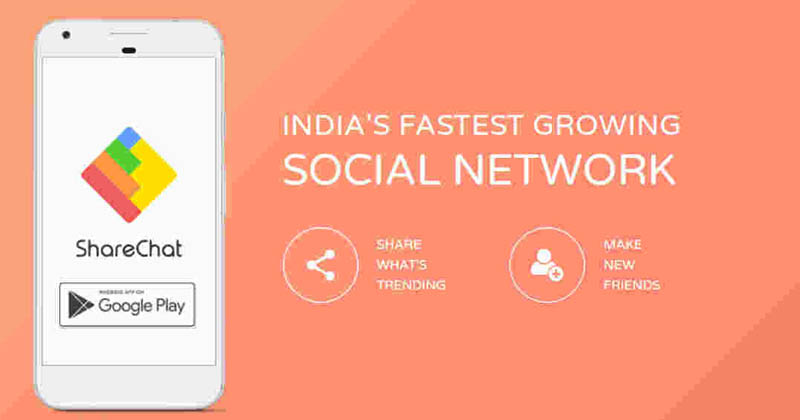In an age obsessing about social media, when’s a day where one doesn’t log on to any kind of social media handle and tool and engage in anything but virtual discussion? Perhaps, limited are those days and at least in both occurrence and change where such a thing happens. Will this be too wrong to say?
No, right?
When Facebook arrived, the entire world migrated to the popular social connect tool. When Twitter arrived, our conversations were lessened in terms of the number of words albeit repetitive in occurrence.
Then, we made love to an age of hashtags. Together, likes, shares, tweets, retweets and hashtags became the modern verbiage of both professional and personal communication. Now, what was there in the course of the future- all wondered? Soon, the answer came in form of picture uploading and sharing platforms.
It wasn’t that there just weren’t any before. There was Flickr, then came Tumblr. But the big daddy of photographs and instant clicks- the word instant defining our age such poignantly and exhaustively- came in the form of Instagram. Possibly, we might have thought that this was the coming of the full circle and that, that was that.
But no, it wasn’t, really, truth be told. With Snapchat, the way youngsters communicated among themselves changed completely and embraced a new dimension, so to speak.
Seen any young college going girl on the metro right next to you, with her head buried in her smartphone? You may have. The pleasure of having your face morphed into some cuddly cute animal and practically being made into an emoji- for the lack of a better expression is just so fulfilling, it seems- that even working mums, homemakers, young teens, grown-ups and first-time couples are seamlessly making love to Snapchat. There’s no harm in it by the way.
But all that said while being engaged with Snapchat is the common norm of the day, here comes a piece of news that might give those in India- remember, this is a geography where 65 percent of the country’s population is under 35 years of age- a fair bit of surprise. In case, most of us might have thought that Snapchat was the only instrument of liberation from mundane and run of the mill social media tools then well, think again. There’s Sharechat now in India.
Here’s the first question and possibly it’s not an understatement to think that you’re about as surprised with this development as we are.
What is Sharechat, after all? And where had ShareChat been?
Well, to put it simply, this might just be India’s biggest and most important social media story never known. Ever heard of the flick, “The Greatest Story Never Told?” This is that instead of the Hollywood essence but for the realm of social media.
A quote, taken just a few days earlier from the horse’ mouth, in this case, Farid Ashan, has the following: “Sometimes I feel like everyone is growing through a breakup in India.”
So what’s the point, you might ask?
The ShareChat main-man feels these are clumsy commiserations. Well, actually, aren’t they? You’ve got to agree with the founder here because how can hearts be broken? Mr. Ashan also notes about a whole tide of regional feminism sweeping over varied social media platforms. This may seem obscure but can trickle a wave of insular communication.
Ahsan was referring the above in lines with a girl user who shared the following under a hashtag that said the following, “Girls are smart, boys are fools.”
But let’s delve into more meaningful phrases and observations that actually put forth a point.
In an interesting story published on the BBC, ShareChat’s success, heard not from the loudest decibel leading to noise, as yet, had some interesting observations:
“Bangalore-based start-up ShareChat, founded by three engineering school graduates who met at a hackathon, is India’s first homegrown social network. With 30 million users across 14 Indian languages, it is also one of the fastest growing networks in Asia.
Users – the majority aged 18-25 and mostly hailing from medium and small cities and towns – have doubled in the last four months. The founders say they aim to reach 100 million users in the next 12 months. That’s half of WhatsApp – and a third of Facebook – users in India.”
There’s something about the intellectual vibrancy of Bangalore that can’t keep startups on the backburner or shove them under the carpet, a critic of these firms for whom they are but a bubble might think- isn’t it?
But just why would critics even dare to think that way?
As of October 2015, ShareChat had already raised 124 million but in five rounds of funding. The solid flow of cash and hence, a permanence of ideas, notwithstanding, it has to be said, that the real success of ShareChat is because its founders took a big step of realizing the potential of “vernacular content” and deciding to go against the tide as seen nowadays.
There’s so much in India to discover. Ever heard that one? But just how often does one really go deep inside to emerge with the gold? In a mine, they do just that, don’t they?
Similarly, all filtered posts of animal faces-cute as hell as they may be- rollicking in unassumingly funny emojis aren’t the only Insta-gratifying ways to seek fun or are they? Here’s exactly how ShareChat is different. Only on Heena designs, ShareChat has nearly the largest collections in the country.

India has a place for everyone who wishes to seek his or her identity. And often, it just takes the right mirror to be held to see it. Well, it may not be too flattering, patronizing or boasting to suggest that ShareChat is doing just that: being the mirror through which Indians from all age-groups, strata, cultural clusters can see themselves.


